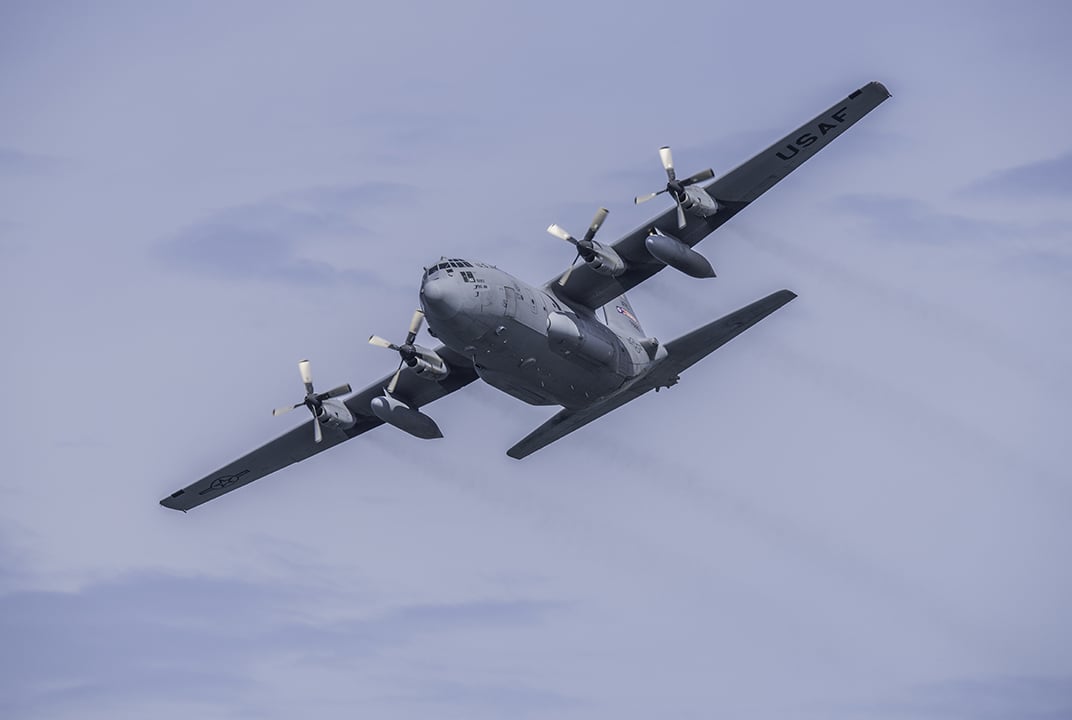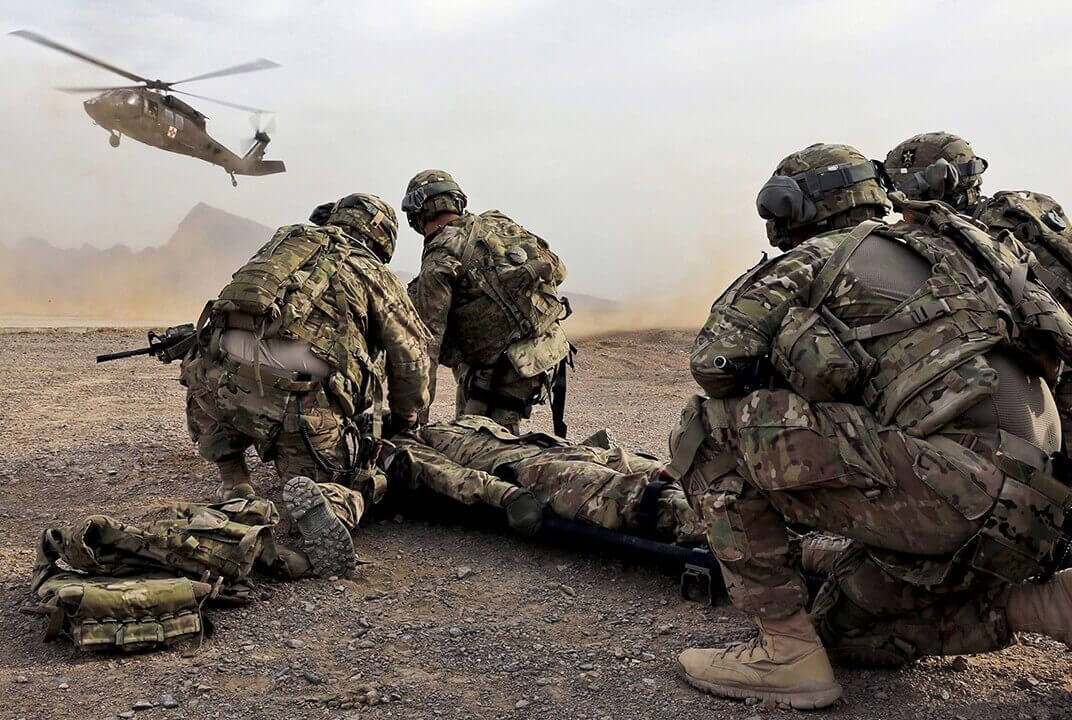Insight | Military leaders state industry partnership “critical to our future” in satellite communications
Military leaders state industry partnership “critical to our future” in satellite communications
Government
As one of the world’s leading satellite companies, Inmarsat is honored to take part in events such as the recent 31st Space Symposium in Colorado, U.S. that brings together top thought leaders in government and industry from around the world to discuss the issues, trends and strategy that will dictate the future of space.
We had a strong presence at the show; CEO, Rupert Pearce, participated on the “Commercial Satellites Mega Panel” to offer his perspective on the industry, and I presented during the event’s Technical Track program.
I spoke of the need to support the 21st Century military and civilian government through commercial satellite augmentation. Highly globalized, asymmetrical conflict has changed the rules of war, and troops depend upon 24/7/365 access to the very latest, most advanced satellite capabilities, wherever they are, whenever they need them.
However, I indicated that the current SATCOM acquisition model has become fragmented and dysfunctional over the last two decades and that the U.S. Department of Defense (DoD) would benefit significantly by working with commercial providers to empower servicemen and women with what we call “SATCOM as a Service” – SATCOM capabilities delivered as a managed service, whenever and wherever required– which would offer greater suitability, availability, security and resiliency, while establishing optimal flexibility and global reach.
At the symposium, I was extremely encouraged to find that our perspectives were strongly reinforced in speeches delivered by the military’s senior leadership. It is clear that there is a dramatic and unified shift in the thoughts of defense leadership that integration with commercial satellite communications is essential to the success of military SATCOM capabilities in the future. Here are some of the highlights:
Deborah Lee James, Secretary, U.S. Air Force
Secretary James stressed that the space domain is changing dramatically due to threats from debris and hostile parties. “Unfortunately, there are some nations that have chosen to demonstrate anti-satellite weapons that not only destroy the satellite, but create debris that threatens the entire space environment,” James said.
Historically, James said, space systems were designed and built for an uncontested environment but this is no longer the case. Therefore government leaders must commit to absolute situational awareness though increased modeling, simulation, training and operational exercises.
“It is not just about acquiring new capabilities,” she added. “It is also about getting more bang for our buck by coming up with new ways to use existing capabilities…to deliver what we hope to be game-changing capabilities to combatant commanders with eyes on the battle space.”
Rather than attempting to do this alone, the government should pursue proactive partnerships with private industry. “We need to continue to partner with industry and make positive adjustments.”
Lt. Gen. John “Jay” Raymond, Commander, 14th Air Force (Air Forces Strategic), Air Force Space Command; and Commander, Joint Functional Component Command for Space, U.S. Strategic Command
Lieutenant General Raymond revealed that growing threats signal urgency for partnerships with commercial space operators. “In the not too distant future, every satellite in every orbit will be able to be put at risk,” Raymond said.
He indicated that the increasing threats validate the augmentation of U.S. space domain awareness; the integration of U.S. military and intelligence space operations; and the strengthening of space-related ties with U.S. allies and commercial space operators.
General John Hyten, Commander, Air Force Space Command, U.S. Air Force
General Hyten indicated that commercial partnerships are “critical to our future” in combining situational awareness with full-time command and control capability of the Joint Space Operations Center (JSpOC) – ultimately leading to domain awareness about threats and other global conflict concerns.
“When we have soldiers, sailors, airmen and marines deployed in harm’s way all around the world we have to make sure that our number one priority is to get them everything they need, every minute of the day because everything that they do is critically dependent on space,” said Hyten. ”It’s our responsibility to walk down that path; it’s our responsibility to take action as we go through. That action is critical.”
Now that the focus is on the importance of an integrated architecture, how exactly do we ’walk down this path‘? At Inmarsat, we have plenty of ideas.
Throughout our history, we have proven ourselves as a leader in delivering the very best in satellite communications and solutions to the government. We are helping pioneer the effort to forge a lasting, productive partnership with government to protect space while advancing military and humanitarian missions around the globe. And, in future posts here, we will share many of those ideas.
About the author
Rebecca M. Cowen-Hirsch is Inmarsat Senior Vice President for Government Strategy and Policy in the United States Government (USG) Business Unit, based in Washington. Ms. Cowen-Hirsch brings 25 years of defense, aerospace, and executive leadership experience to Inmarsat. As a decorated member of the Senior Executive Service (SES) in the U.S. Department of Defense, she served as the Program Executive Officer for SATCOM, Teleport and Services at the Defense Information Systems Agency (DISA) and in several key SES executive positions including the first Vice Component Acquisition Executive for DISA, with executive management responsibility for the acquisition oversight and horizontal integration of DISA’s products, services, and programs. Ms Cowen-Hirsch established the Defense Spectrum Office, serving as its first Director where her responsibilities included the development of national security spectrum strategic plans and policy, and national and international negotiation of defense spectrum issues. Her broad defense career ranged from systems engineering, experimental flight test, program management, spectrum management, and a wide range of executive leadership positions. Ms. Cowen-Hirsch was a rated experimental flight test engineer; was the first female civilian Mission Commander for the Advanced Range Instrumentation Aircraft (ARIA) mission, and was the recipient of an Exemplary Service Medal for her years of selfless service to the Department of Defense. Ms Cowen-Hirsch has a Bachelor of Science Degree in Electrical Engineering, conducted post-graduate studies in Engineering Management, and is a graduate of the University of Tennessee Space Institute Experimental Flight Test Program; the DoD’s Acquisition Management Program; and the Cambridge Senior Executive Leadership Program.


